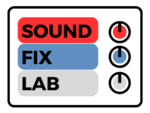Compression is a fundamental tool in music production, allowing engineers to shape the dynamics of a sound and achieve a polished and professional mix. When it comes to compression, two commonly used modes are Peak and RMS. In this article, we’ll explore the benefits and drawbacks of each mode and discuss their applications in music production.
Understanding Peak Mode:
Peak mode, also known as peak detection or peak-level detection, measures the highest amplitude point of an audio signal. It responds quickly to abrupt transients and is effective in controlling peaks, adding punch, and taming unruly transients. By reducing the level of transient peaks, peak mode helps to prevent clipping and maintain a consistent volume level.
Benefits of Peak Mode:
1. Preserving Transients: Peak mode excels at preserving the natural dynamics and transient details of a sound source. It allows percussive elements like drums or plucked instruments to retain their impact and clarity.
2. Punch and Excitement: By quickly attenuating transients, peak compression can add a sense of excitement and energy to a mix. It can make drums hit harder, guitars sound more aggressive, and vocals cut through the mix.
Drawbacks of Peak Mode:
1. Inconsistent Control: Peak mode primarily focuses on handling transient peaks, which means it may not provide consistent control over the overall dynamic range of the audio. This can result in uneven levels and a less balanced mix.
Understanding RMS Mode:
RMS mode, short for Root Mean Square, measures the average energy level of an audio signal over time. It provides a smoother and more balanced compression effect, making it well-suited for controlling the overall dynamic range of a mix.
Benefits of RMS Mode:
1. Consistent Control: RMS mode offers more consistent control over the dynamic range of a sound source. It allows for greater control over the average loudness and can help even out the levels within a mix.
2. Balanced Compression: With RMS compression, you can achieve a more transparent and natural-sounding compression effect. It can be particularly useful for controlling vocal performances, bringing out subtleties in acoustic instruments, or gluing together elements in a mix.
Drawbacks of RMS Mode:
1. Transient Smoothing: Compared to peak mode, RMS compression may not respond as quickly to sudden transients. This can result in a slight loss of perceived loudness and impact, especially on percussive elements or highly dynamic sources.
Finding the Right Balance:
Rather than strictly adhering to one compression mode, it’s common to use a combination of both peak and RMS modes to achieve the desired results. By using peak compression to control transients and RMS compression to even out the overall levels, engineers can strike a balance between preserving dynamics and ensuring a cohesive mix.
Both peak and RMS compression modes have their merits and drawbacks in music production. Peak mode is excellent for emphasizing transients, adding punch, and maintaining clarity, while RMS mode provides consistent control over the overall dynamic range and creates a more balanced mix. Understanding these modes and their applications will empower you to make informed decisions when using compression in your music production endeavors.
Remember, the choice between peak and RMS modes ultimately depends on the specific needs of your audio material and the desired sonic outcome. Experimentation, attentive listening, and a keen understanding of your musical goals will guide you in harnessing the power of compression to create captivating and professional mixes.





